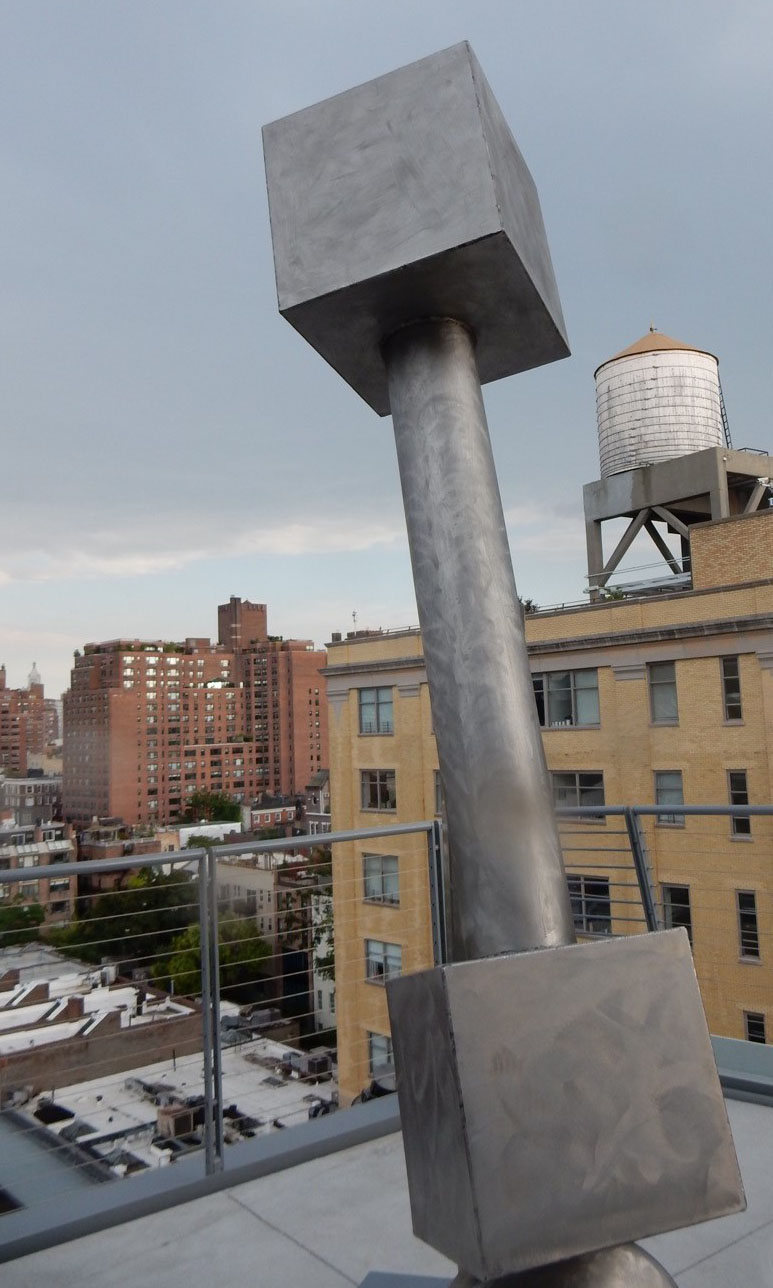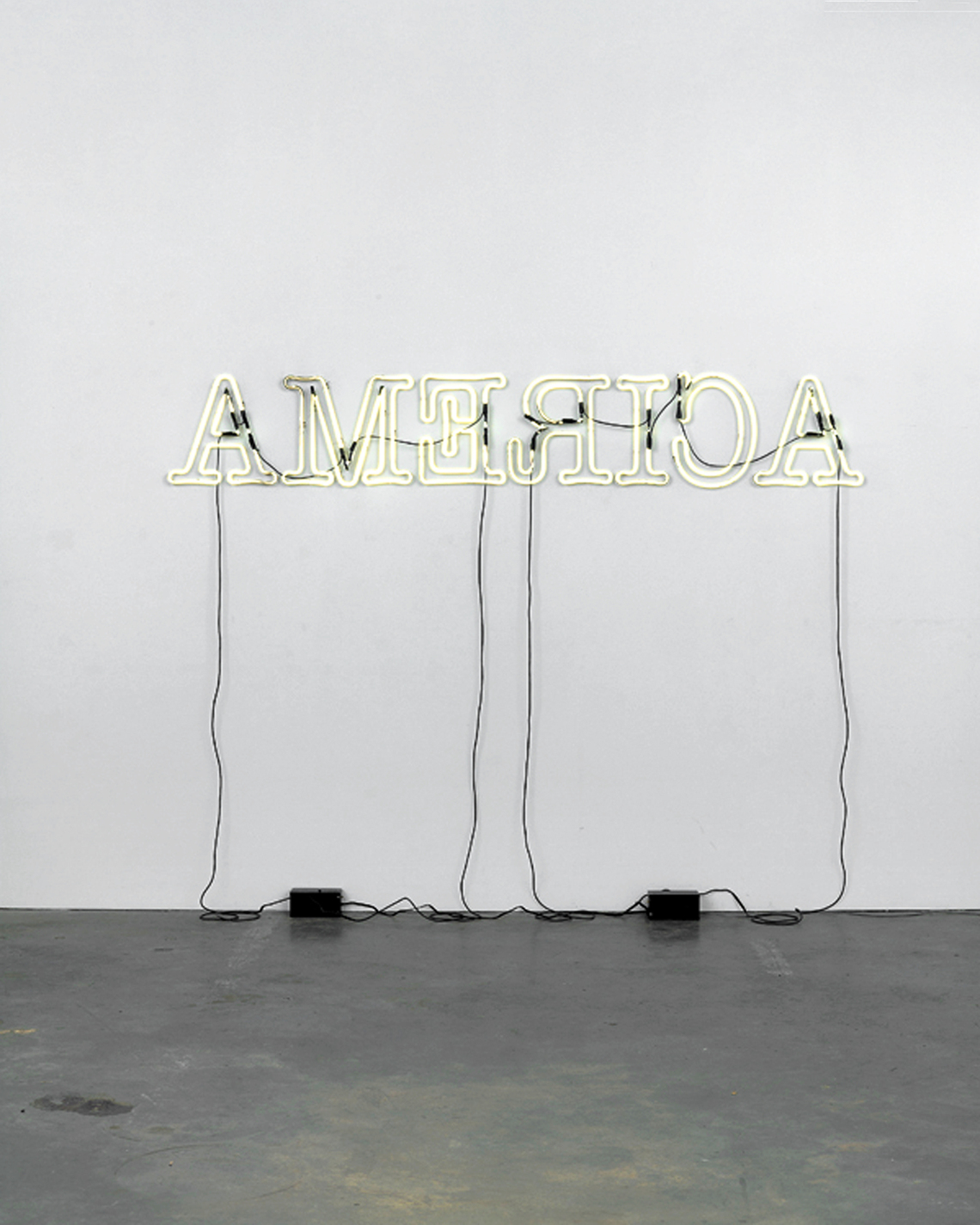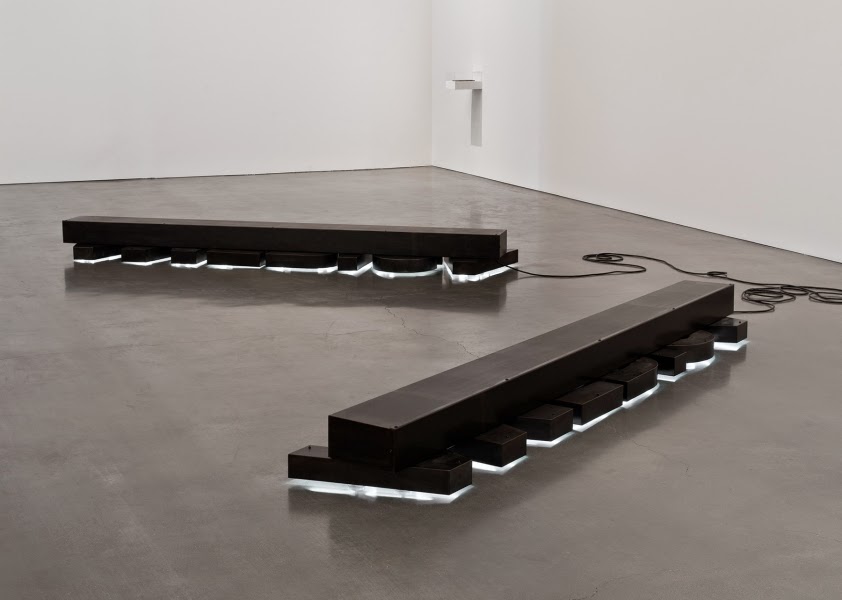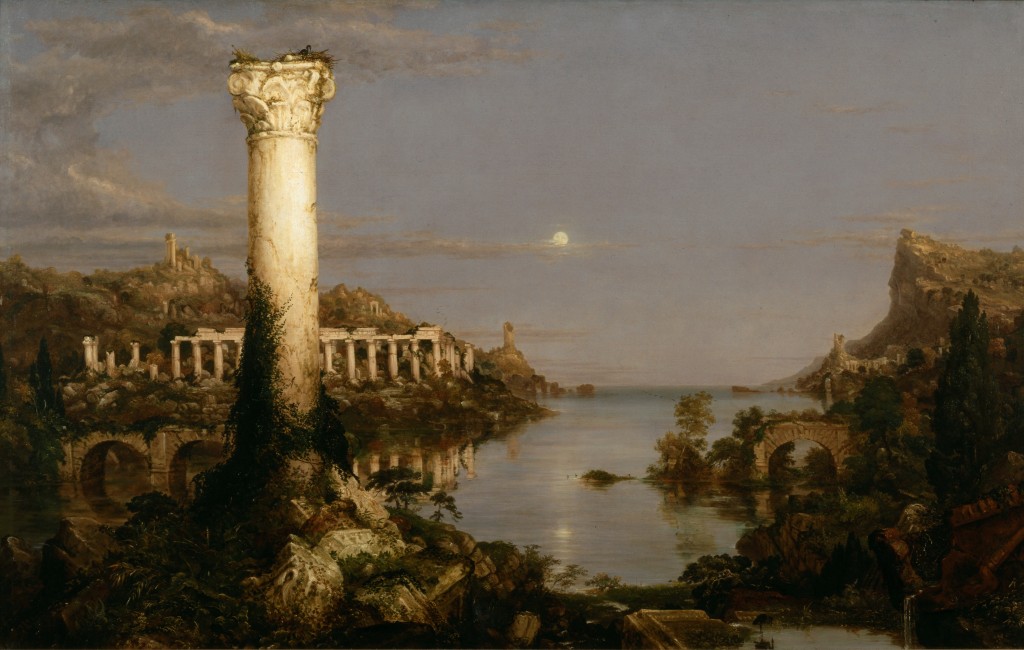
On the terrace at the Whitney, September 2015
On a recent trip to New York, I visited the new Whitney Museum of American Art. The museum recently moved from Manhattan’s Upper East Side to large new premises in the Meatpacking District overlooking the Hudson River. It opened in May with a suitably ambitious exhibition entitled ‘America is Hard to See’ (a phrase borrowed from a 1951 meditation on Columbus by Robert Frost). As one of the curators explained, the exhibition does not claim to offer a ‘comprehensive history’ of American art so much as ‘a series of provocative thematic chapters’. The concluding chapter, ‘Course of Empire’, takes its title from a series of works by Ed Ruscha (from 2005), which in turn alludes to Thomas Cole’s 1833-36 series, The Course of Empire, the title of which comes from the opening line of a 1729 poem by Bishop George Berkeley.
Allusion accrues and intensifies in the exhibition’s final chapter; not least in Glenn Ligon’s Rückenfigur (2009). The work is steeped in art history –from signage and minimalist neon sculpture to the ancient convention of the figure seen from behind whose perspective the viewer is invited to share. A famous example is Caspar David Friedrich‘s Der Wanderer über dem Nebelmeer (1818); wanderer above the sea of fog.

Caspar David Friedrich,
Der Wanderer über dem Nebelmeer (1818)
oil on canvas (98.4 cm × 74.8 cm)
Kunsthall Hamburg

Glenn Ligon, Rückenfigur, 2009.
Neon and paint (61 × 369.6 × 12.7 cm).
Whitney Museum of American Art, New York
© Glenn Ligon; Courtesy the artist and Regen Projects, LA
‘And that’s one of the really interesting things about this piece,’ says the curator Scott Rothkopf, ‘this idea of America, this country, this word facing away from us but at the same time addressing us. …You see the fragile connections between these letters, which I think suggests the sense of America, this country, as a confederacy that’s both united and sometimes divided. And I think that all of those things, in a way, function metaphorically for where this country is at this moment.’
Rückenfigur is part of an (ongoing?) series of neons that riff on national symbolism. The first, from 2006 – now on show at the Tate – had the neon painted black and intermittently turn off. Ligon described it as a response to the idea ‘that America, for all its dark deeds, is still this shining light. That’s how the piece came about, because I was thinking about Dickens’s “the best of times, the worst of times.” Yes, that’s where America is. We can elect Barack Obama, and we’re still torturing people in prisons in Cuba.’
As the series progresses, the shining light is getting harder to see. The most recent addition, exhibited in Los Angeles earlier this year, features two neon Americas face down on the floor There’s no more foggy ambiguity here; no more pleasure in the wandering processes of our own perception. Instead, I am reminded of the final painting in Cole’s series – Desolation.

Installation view of Glenn Ligon,
Well, it’s bye-bye/If you call that gone
Regen Projects, Los Angeles
March 14 – April 18, 2015

Thomas Cole, Desolation. 1836 (99.7 x 160.7 cm) New York Historical Society

Leave a Reply